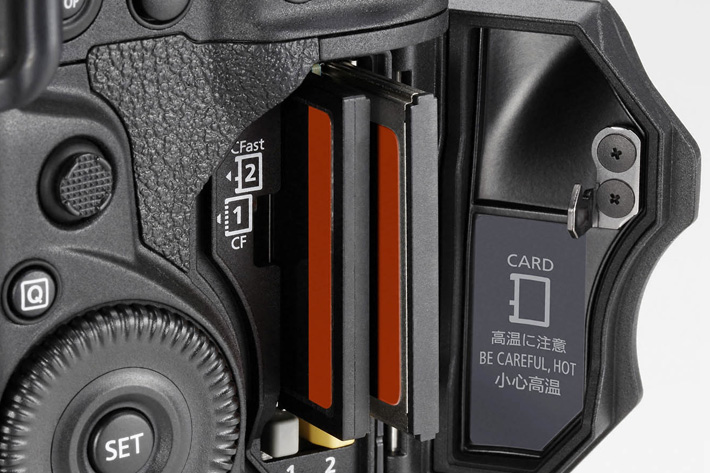
Canon suggests customers to refrain from using SanDisk CFast cards when shooting still images, as files, both in RAW or JPEG formats, will be corrupted. A firmware update will be available in July.
According to Canon, if a SanDisk CFast card is inserted into the camera or a card reader, the bottom part of still images recorded may be corrupted. This phenomenon is confirmed in images recorded in both the RAW and JPEG formats. In the RAW file, the image corruption may appear in the bottom right corner of the image. In the JPEG file, the image corruption may appear in the lower third area of the image.
The information from Canon indicates that movie recording is not affected by this phenomenon, neither are still images or movies recorded to CF cards. The company adds that the problem is caused by SanDisk Cfast cards and provided a list of affected products:
SanDisk Extreme PRO CFast2.0 64GB (SDCFSP-064G-xxx)
SanDisk Extreme PRO CFast2.0 128GB (SDCFSP-128G-xxx)
SanDisk Extreme PRO CFast2.0 64GB (SDCFSP-064G-xxxA)
SanDisk Extreme PRO CFast2.0 128GB (SDCFSP-128G-xxxA)
SanDisk Extreme PRO CFast2.0 64GB (SDCFSP-064G-xxxB)
SanDisk Extreme PRO CFast2.0 128GB (SDCFSP-128G-xxxB)
The “xxx” at the end of the product number varies depending on the sales region.
The EOS-1D X Mark II is Canon’s first digital SLR to accept CFast type memory cards. Based on the Serial ATA Gen III interface, CFast 2.0 cards offer significantly faster potential speeds when writing to the card — an important factor in a camera’s shooting performance, and one reason for Canon to use them in this model.
Canon will release camera firmware that solves the problem early July, but until then asks customers to refrain from using SanDisk CFast cards when shooting still images. For those that must use the camera with these cards, Canon indicates a workaround and ways to prevent the phenomenon. All the information is available on Canon’s website.
